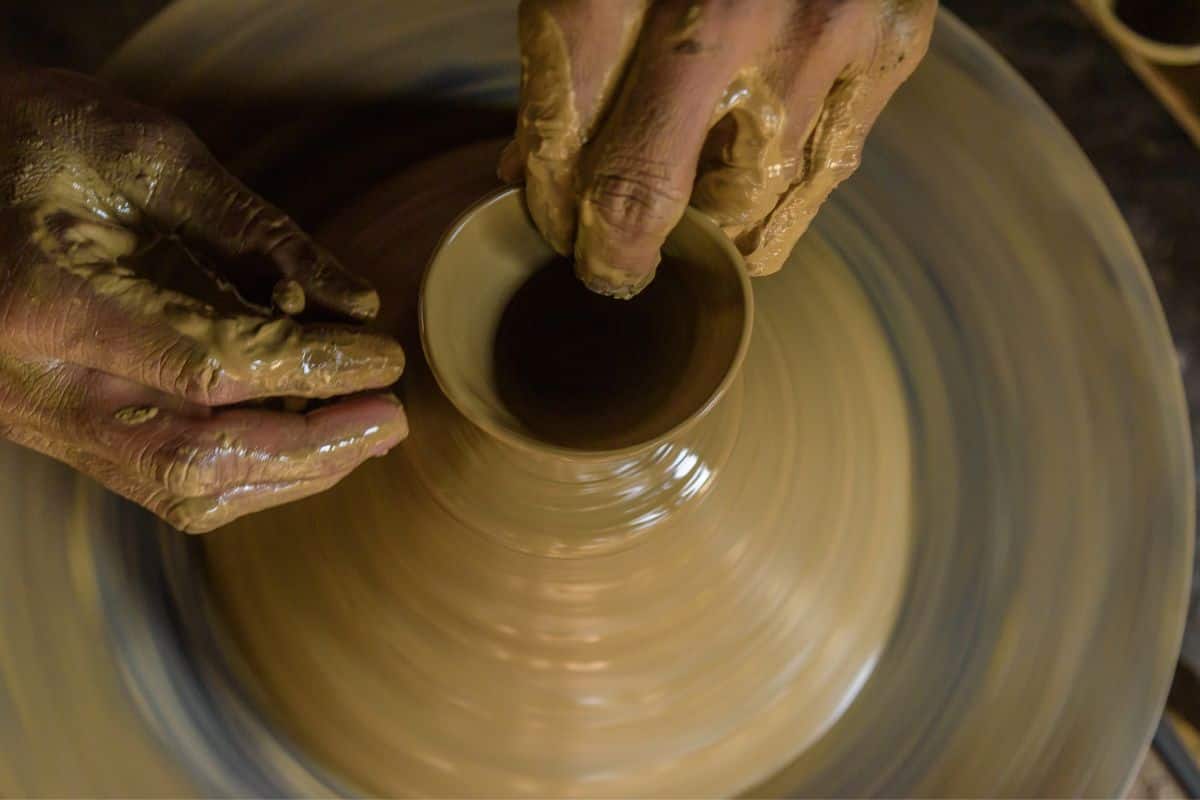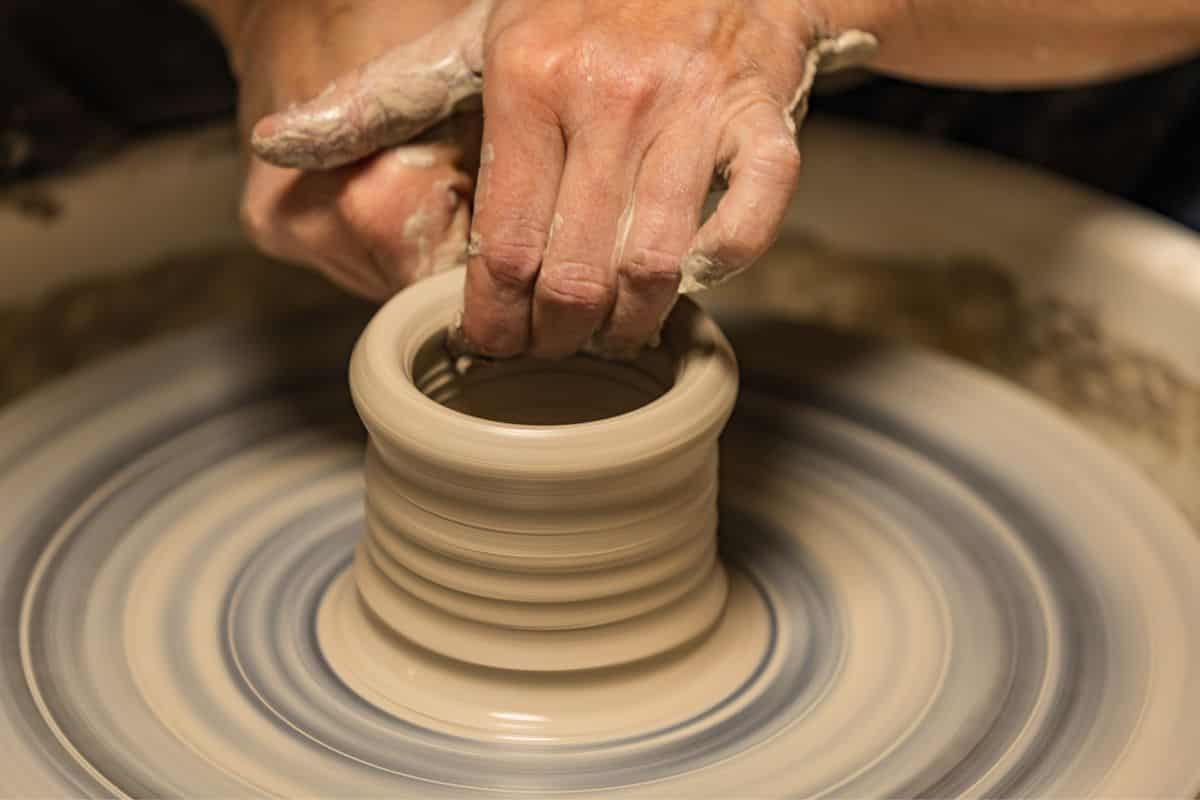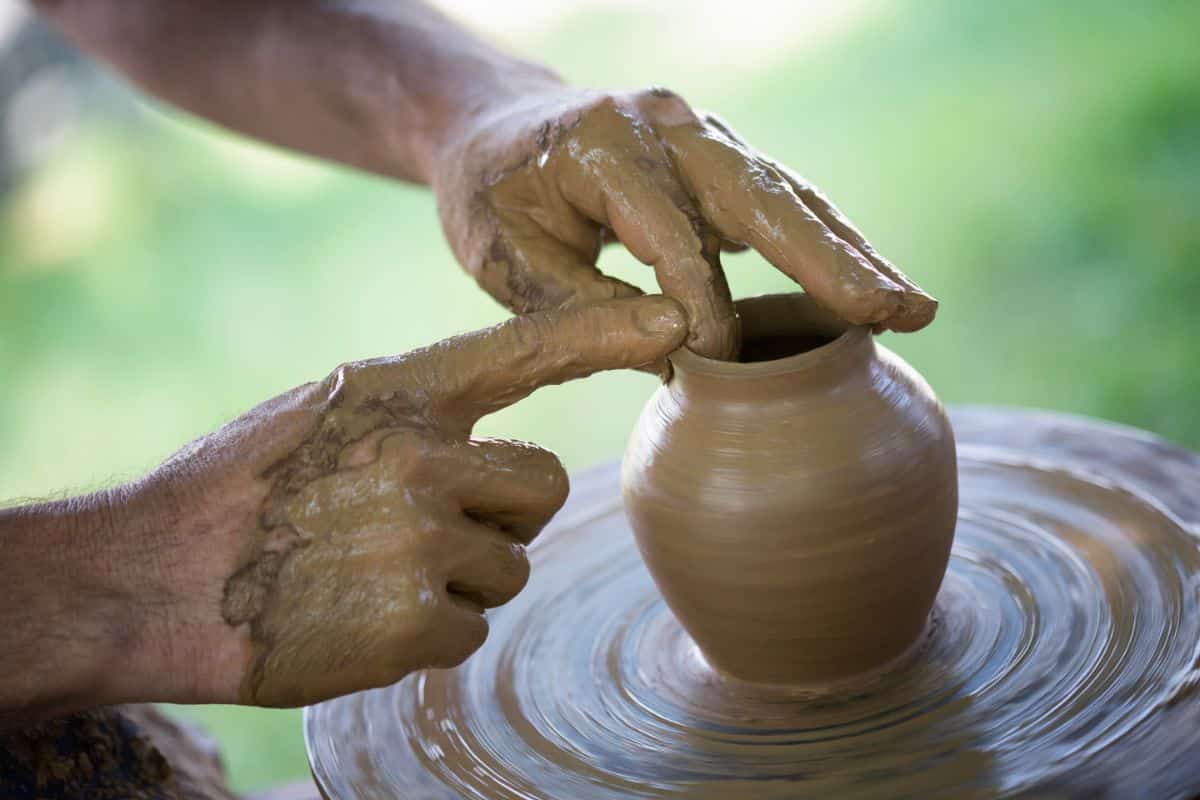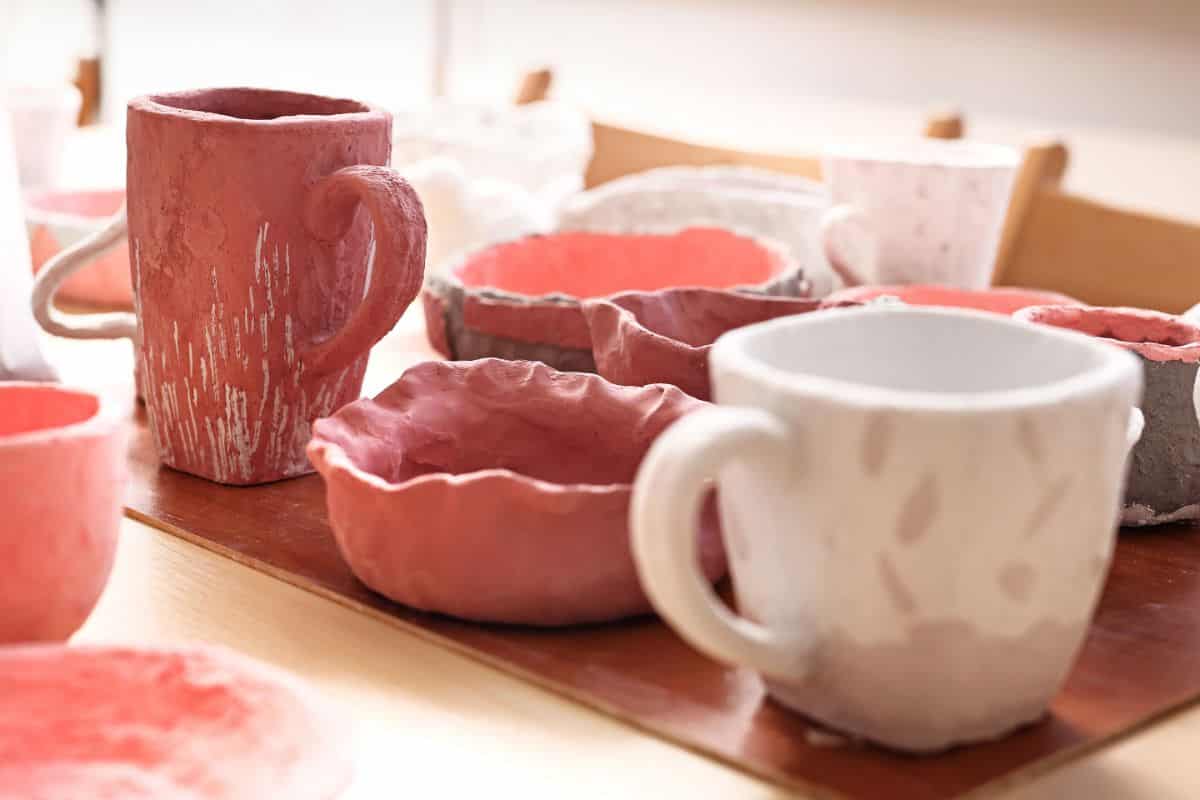Many ceramic artists, potters and ceramic manufacturers mark their work. However, depending on the artist and the piece, there may not be a mark on your ceramic.

So, how can you identify unmarked pottery and ceramic? Theoretically, it is possible to identify the pottery maker.
However, this can take quite some time and effort, and there is no guarantee that you will ever know the maker with full certainty.
In the past, all pottery was handmade, and different countries and regions had their own own markings and style.
Many times, an unmarked pottery piece is just an experimental piece. Also famous artists like Pablo Picasso worked with glazes and ceramics to try a few different techniques.
As these experiments aren’t usually sold during the artist’s lifetime, they become irrelevant and unimportant which means the artist doesn’t mark them.
In this guide, we find out you can identify a pottery or ceramics piece that has no markings.
How To Identify Unmarked Pottery?
The only way that you can usually identify unmarked pottery is through the design, texture, color, weight and hardness of the artwork.
As a rule of thumb, you are looking to establish what maker the piece is. Even if you cannot find the maker or school of makers, you might at least be able to identify when it was made and the specific period.
If you are not sure how to go out about identifying an unmarked pottery piece, then check out our guide below.
Alternatively, you can also take your pottery to an expert who will be able to tell you more about your piece.
The Best Ways To Identify Unmarked Pottery
If your pottery doesn’t show any numbers, logos, stamps, dates or other identification markers on the bottom or anywhere else on the piece, then it can be very difficult to place it.
A pottery expert with good knowledge of pottery history uses the physical attributes of a piece to identify the period and maker.
However, if you are not an expert, then it can be tricky to know what to look out for when you examine your pottery.
Let’s take a look at the different identification criteria, including size, color, types of glazing and decorate patterns or flowers.
Identifying Unmarked Pottery By Size
You can identify some pottery pieces correctly by taking a closer look at their size and thickness.
Certain sizes of pottery are linked to certain time periods, countries and even regions.
As an example, American pottery typically is much thicker and heavier than pottery that was made in other countries.
This type of pottery is also seen to have a heavy bottom, so you can identify American pieces a little easier.
Identifying Unmarked Pottery By Color
If you are not familiar with pottery or how you make ceramics, then you may not know that actually the color of a pottery piece is determined by the color of the clay that was used to make the pottery.
You can get the best understanding of the clay’s original color when you take a look at the bottom of your piece. The bottom of pottery is usually left unglazed and it will show you the natural clay color.
People used a vast range of different colored clay throughout history. Some clay colors can be associated with particular time periods, as well as certain regions.
For example, beige clay is associated with pottery made in the US state of Kansas, while red clay was used for pottery pieces in Oklahoma.
Sometimes, you may also find that the clay is discolored which can also give you a hint towards its origins.
Identifying Unmarked Pottery By Type Of Glaze
Another strong indication of where and when your piece of pottery was created is the type of glaze that was used.
It can give you an understanding of the rough age of your piece. The pottery glaze is also a strong indicator for whether the pottery is fake or genuinely antique.
Check the bottom of your pottery. It should be unglazed and the natural clay color should show.
Identifying Unmarked Pottery By Decoration
One very strong, and more obvious, indication of where and when your pottery was made is the patterns and designs that were painted on a piece.
There are thousands of different, intricate designs that can hint at the local tradition.
For example, when you take Moriage China pottery, you will be able to notice the detailed flower designs and gentle pastel coloring that are almost inset into the clay.
Other pieces such as Willow are easily identifiable through their clear designs of white and blue willow, apple and orange trees, boats, birds, people and even a small bridge.
In addition, it’s also worth examining any indentations or patterns at the bottom of the pottery. This can hint further at the historical origins of the piece and help with identification.
The Best Ways To Identify Unmarked China Pottery

Chinese pottery and ceramics is one of the oldest in the world, making it also one of the most valuable ceramics.
However, it isn’t always easy to identify China pottery with no markings. In the last two hundred years, there have been a large number of fakes and imitations flooding the market.
Most Chinese pottery is marked and this is what sets it apart from any faux pottery.
Unfortunately, not all old China pottery is marked and you will have to resort to individual criteria, such as decorations and shape, to identify the piece.
It’s worthwhile knowing a little bit about Chinese pottery, especially the three types of pottery produce in China: soft-paste porcelain, hard-paste porcelain and bone china.
All these types have individual features that distinguish one from the other but they also have similar characteristics.
One of the easier ways to identify unmarked china porcelain is the pattern and design.
Many Chinese potteries applied their own unique design which helped them to stand out in a crowded pottery market during their time.
You will find that the most common designs for China pottery are gilded in gold and the colors are vibrantly bright. These pieces often feature willows, flowers and rivers.
You can also use the type of glazing to identify Chinese porcelain. As a rule of thumb, China pottery is smooth, and it should not have any cracks.
Additionally, the piece should be leveled perfectly. For example, a plate should sit flat on the table.
Chinese potters would strive for intricate perfection in detail, so the balance of the piece was as important as the accurately painted details.
The Best Ways To Identify Unmarked American Pottery
The easiest identification method for unmarked American pottery is to check the bottom of your pottery.
This area can reveal a large amount of information about American pottery, much more than the usual type of glaze or other general characteristics.
Let’s take a closer look at how you can identify an unmarked piece of pottery that may be American.
Identifying Unmarked American Pottery By Weight
Identifying American pottery with no markings is typically done through weight. Generally, American pottery is so much heavier than Asian pottery or European pieces.
Additionally, American pieces of pottery are also slightly imbalanced which means they are often too hefty for their size. This is particularly true for the bottom of the pottery.
You can also check the thickness of the piece. American pottery is always thicker than their foreign counterparts.
Saying this, it takes a lot of skill, knowledge and experience in pottery history to identify American pottery pieces by their weight.
Identifying Unmarked American Pottery By Color
An experienced pottery expert can also identify an unmarked American pottery piece through its color.
Check the bottom of the pottery to find out what the unglazed area of the clay looks like. There are different clay colors associated with different parts of the world and even locations in the US.
As clay never travelled too far due to its weight, it will give you an indication of where the pottery might have been made.
For instance, pink and yellow clay would come from Shwanee or Hull, both which were large pottery manufacturers in the 20th century.
Identifying Unmarked American Pottery By Glaze
Glazing techniques and materials changed considerably over time, and differences developed in different regions across the United States and the world.
Hence, the types of glazing used for American pottery also moved with manufacturing trends.
You can identify American pottery relatively easily through the different glaze trends and associated periods.
The most popular glaze around the turn of the 20th century was a brown, shiny finish which we now call a standard glaze.
From 1915 to the 1930s, potters and potteries used a matte finish which was on trend at that time. These matte glazes are much more valuable today than the shiny finish.
From the 1930s through to the 1950s, manufacturers used a mix of matte and shiny finishes.
The Best Ways To Identify Unmarked Porcelain
Today, we understand porcelain as a certain type of china which is much more durable and stronger than the standard Chinese pottery.
This great durability is thanks to a change in the production process where porcelain is exposed to extremely high temperatures making it stronger.
In addition, porcelain makers use a particular kind of clay which is called kaolin.
Pure porcelain is traditionally lightweight and translucent. You can easily identify any porcelain by gently tapping it.
The produced sound from porcelain is somewhat louder than with other comparable chinaware.
Additionally, porcelain also has an unusual shape which wasn’t on trend when these pieces were produced. The majority of porcelain pieces are pear-shaped or cylindrical.
Similar to other identification tests with unmarked pottery, you can also check the color of the porcelain. Many porcelain potters would use certain colors that were unusual for the time.
This meant that when a piece had an unknown color that stood out, it could be instantly spotted as porcelain. This comes in handy today when you want to identify a piece of porcelain.
Also, check the unglazed bottom of your piece. The glazing technique of valuable porcelain was so detailed and perfectly smooth.
If you think that your pottery piece is porcelain, then it’s worth taking it to a ceramic expert and find out more about its history, and perhaps also the value.
How To Tell If Unmarked Pottery Is Antique Or Fake
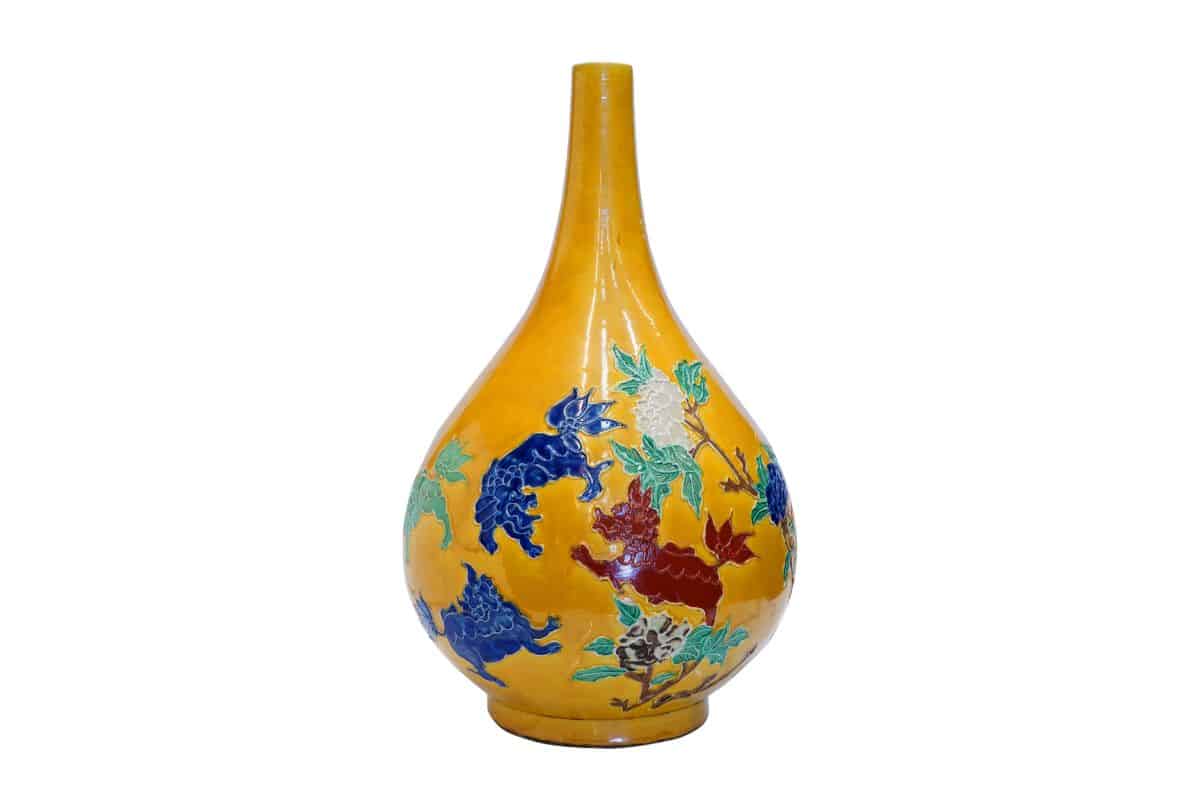
One main reason why it is so difficult to identify pottery without any markings is that there were a large number of faux potteries throughout history that produced a vast amount of fake pottery resembling the real thing.
Even experts today sometimes struggle with telling the difference between genuinely antique pieces and faux pottery, particularly when they do not show any marks.
One of the tell-tale signs for genuine old pottery is that the unglazed area at the bottom of the piece is dusty and it looks old.
In comparison, the bottom of fake pottery is often smooth and does not look discolored. Saying this, some fake potteries even go so far as to paint the bottom in a light brown to make the pieces look older.
The best way to identify an antique piece is just to go over the bottom of the pottery with a clean towel. If the towel is dirty and dusty, then you likely have a genuinely old pottery piece.
However, if the towel is clean after you wiped the piece’s bottom, then it is likely to be a fake.
If you are not sure whether your pottery is fake or antique stoneware, earthenware or porcelain, then it’s worthwhile taking it to an expert.
Some antique pottery can be very valuable, and even if you are not interested in selling it, then you at least know more about its origins.
Conclusion
Many people believe that only pottery which is marked is truly valuable.
However, that is not always the case, and many unmarked pieces of pottery have turned out to be experimental pieces of famous artists and ceramists.
That’s why, make sure that you identify your pottery with no markings, and if in doubt, take it to an expert.


